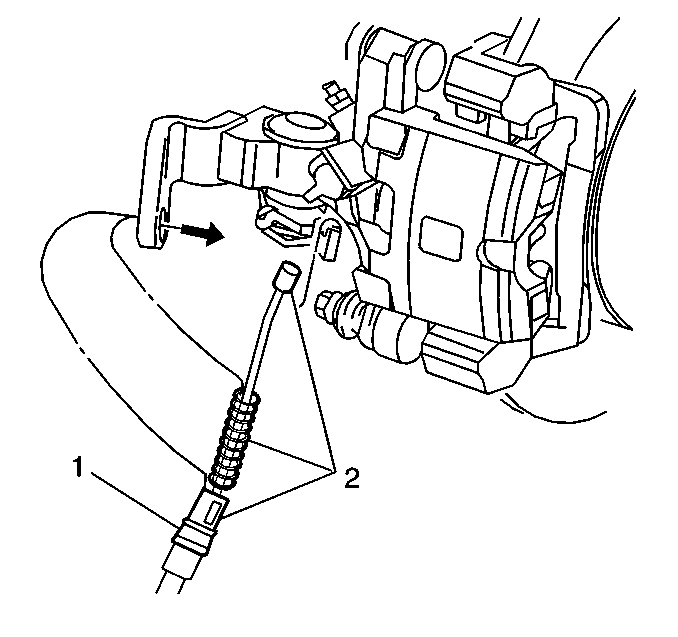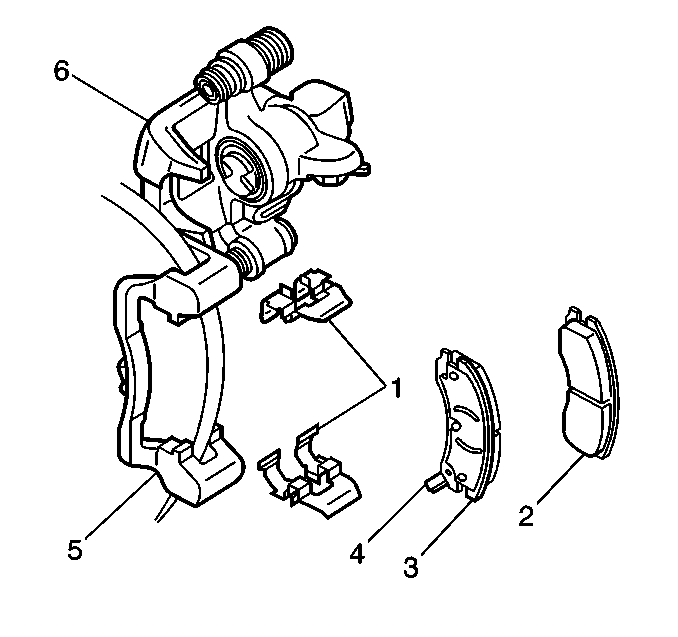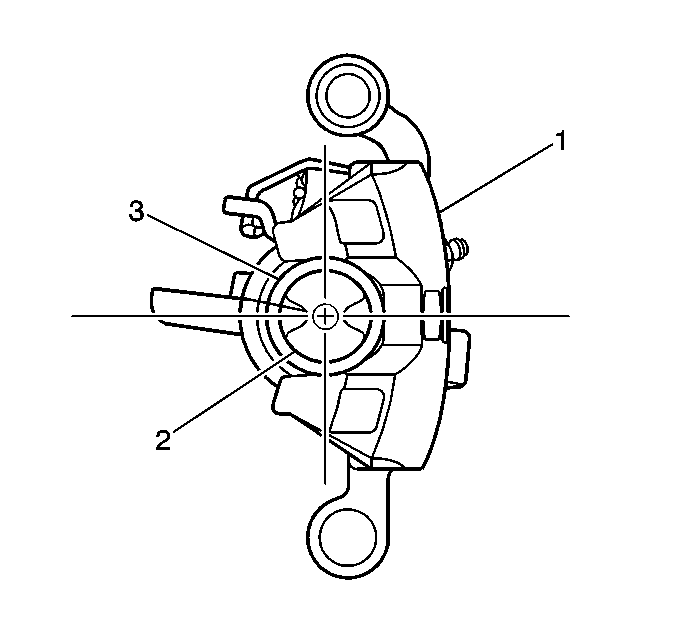Removal Procedure
- Remove 2/3 of the brake fluid from the master cylinder.
- Raise the vehicle and suitably support. Refer to Lifting and Jacking the Vehicle in General Information.
- Remove the Wheel. Refer to Tire and Wheel Removal and Installation in Tires and Wheels.
- Disconnect the park brake cable (1) from the brake caliper.
- Remove the bottom caliper pin bolt.
- Pivot the caliper body (6) upward and support the brake caliper; do NOT disconnect the hydraulic brake flexible hose from the caliper.
- Remove the inboard (2) and outboard (3) pads from the brake caliper bracket (5).
- Remove and inspect the pad retainers (1).
Notice: When using a large C-clamp to compress a caliper piston into a caliper bore of a caliper equipped with an integral park brake mechanism, do not exceed more than 1 mm (0.039 in) of piston travel. Exceeding this amount of piston travel will cause damage to the internal adjusting mechanism and/or the integral park brake mechanism.


Installation Procedure
Important: Do not attempt to clean away corrosion. Corrosion is typically caused by damaged pin boots.
- Inspect the caliper pin bolts and pin boots for cuts, tears, thread damage, or deterioration. If damaged, replace the pin bolts or boots. Refer to Brake Caliper Bracket Overhaul .
- Inspect the caliper pin bolts for damage or corrosion. Replace if damaged or corroded. Refer to Brake Caliper Bracket Overhaul .
- Inspect the piston boot (3) for deterioration, repair or replace the caliper if damaged. Refer to Front Brake Caliper Overhaul .
- Retract the caliper piston (2) into the caliper bore. Use a spanner type wrench to turn the piston clockwise until it bottoms out fully in the caliper and align the piston.
- Install the brake pad retainers (1) into the caliper anchor bracket (5).
- Install the inboard (2) and outboard (3) brake pads into the brake caliper bracket.
- Pivot the caliper down over the brake pads and into the brake caliper bracket.
- Insert the lower caliper pin bolt.
- Connect the park brake cable (1) to the brake caliper.
- Install the tire and wheel assembly. Refer to Tire and Wheel Removal and Installation in Tires and Wheels.
- Lower the vehicle.
- With the engine OFF, gradually apply the brake pedal to approximately 2/3 of its travel distance.
- Slowly release the brake pedal.
- Wait 15 seconds, then repeat steps 12-13 until a firm brake pedal apply is obtained; this will properly seat the brake caliper pistons and brake pads.
- Refill the brake fluid. Refer to Master Cylinder Reservoir Replacement .
- Burnish the pads and rotors. Refer to Brake Pad and Rotor Burnishing .


Notice: Use the correct fastener in the correct location. Replacement fasteners must be the correct part number for that application. Fasteners requiring replacement or fasteners requiring the use of thread locking compound or sealant are identified in the service procedure. Do not use paints, lubricants, or corrosion inhibitors on fasteners or fastener joint surfaces unless specified. These coatings affect fastener torque and joint clamping force and may damage the fastener. Use the correct tightening sequence and specifications when installing fasteners in order to avoid damage to parts and systems.
Tighten
Tighten the caliper pin bolt to 85 N·m (63 lb ft).

